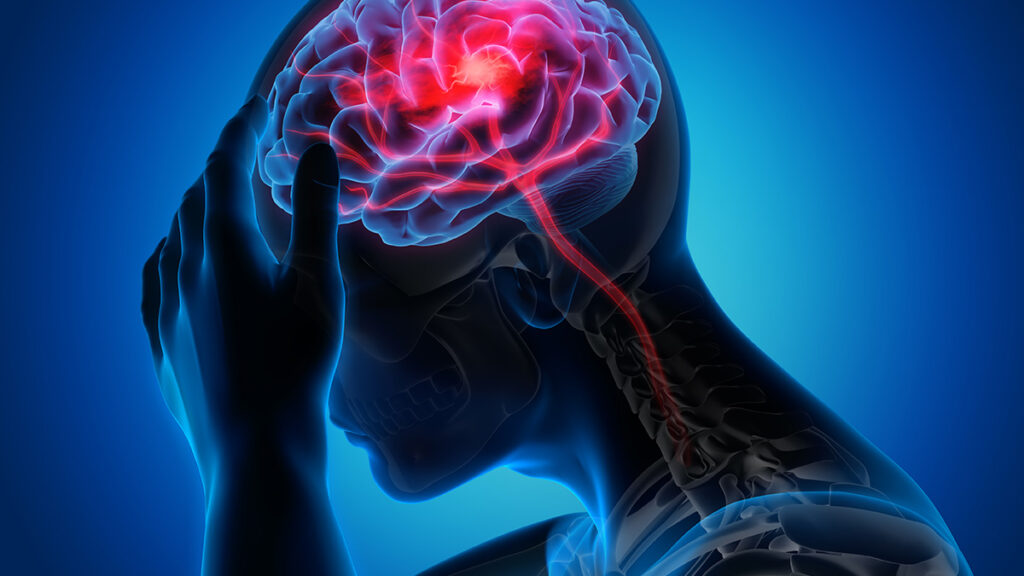Stroke is a leading cause of death and disability in the World. According to the World Stroke Organization’s Global Stroke report 2022, stroke remains the second-leading cause of death and the third-leading cause of death and disability combined in the world. Someone suffers a stroke every 40 seconds, which adds up to nearly 800,000 stroke victims every year. Stroke occurs when the blood supplying oxygen and nutrients to an area of the brain is cut off, and the brain cells in that area begin to die. Consequently, the region of the brain that is affected by the loss of blood supply initiates certain symptoms and can include changes in sensation or motor control.
Common causes of stroke
Stroke comes from blood vessels both outside and inside the brain. Hardening of the arteries called ‘Atherosclerosis’, can occur when deposits of cholesterol, calcium, fat, and other substances (plaques )build up and narrows the blood vessel, making it easy for clots to form, thereby occluding the vessel. These clots can also break free, only to travel to and block smaller vessels inside the brain. The blood vessels inside the brain itself can accumulate this plaque, which prevents blood from flowing correctly to the brain, killing the brain cells, therefore causing a stroke. Occasionally, weakened vessels can burst and bleed into the brain and lead to stroke. Strokes can occur on one side of the brain or both sides of the brain.
Warning Signs of Stroke
Although stroke occurs overtime, it can also occur suddenly. Knowing these key five sudden warning signs can help save lives and reduce the rate of disabilities in the world. Although there are many other signs related to stroke, these three signs show clearer indications of the ailment.
Partial or Full Paralysis: Sudden numbness or weakness in the face, arm or leg (especially on one side of the body). Keep in mind that their limbs may not go completely numb. Instead, they may complain of a pins and needles sensation. The change in facial appearance may be barely noticeable, so ask the person to smile. If they’re unable to form a smile on one side of their face, this may indicate a stroke.
Speech difficulties : Sudden confusion or trouble in speaking properly. It’s most often caused by strokes in the left side of the brain that control speech and language. It makes the person’s speech slurred. The two common types are Dysarthria and Aphasia
Visual Field Loss: This is a sudden vision problem that affects one or both eyes. Visual field is the term used to describe the entire area that you can see when your eyes are fixed in one position. This causes blurry vision and in worse cases permanent blindness.
Other Signs: Sudden difficulty walking or dizziness, loss of balance or problems with coordination, headache, dizziness, pain, feeling faint
How to Easily Detect Stroke (D.I.Y)
A stroke is a medical emergency as the faster you get treatment, the better. Before going to the hospital, there is a test designed to help to quickly assess stroke. It is called the F.A.S.T test, with each letter denoting an action.
F means face: Ask the person to smile, if one side of the face droops, it’s a sign of a possible stroke.
A means arms: Ask the person to raise both arms, if the person cannot hold both arms out, it’s another strong indication of stroke.
S means speech: Ask for a simple phrase to be repeated, if the words are slurred, then it’s a telling sign. Slurring words and poor understanding of simple sentences is another possible stroke sign
T means time: If any of the first three signs (F.A.S) signs are positive, then it’s time to call the hospital.
Who is at Risk?
Anyone can have a stroke since strokes happen when there is a blood clot or blockage in the blood vessels supplying the brain. However, some people are more prone to having it than others. Anyone who falls in the category below, is more likely to have a stroke.
- You are overweight or Obese
- You drink a lot of alcohol
- You have high cholesterol
- Your blood pressure is high
- You have certain conditions such as diabetes
- You smoke
Recovery !
Stroke isn’t a death sentence as early detection and treatment can cause a recovery. Some people fully recover from a stroke and experience no lasting effects. Others require long-term physical therapy and medications. However, recovery after a stroke depends on many factors. These include:
- the area of the brain affected by the stroke.
- the amount of time that oxygen and blood were not flowing correctly.
- a person’s overall health before the stroke.
If you want to find out your stroke risk then you should talk to your doctor. Getting your blood pressure, cholesterol levels and other factors checked can tell you if you are more likely to develop a stroke. Eating a balanced diet, getting regular exercise and enjoying a healthy lifestyle can help to lower many of these risks.
